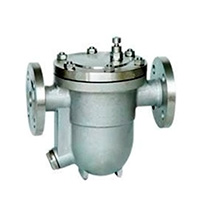Steam traps
Description of Section "Steam traps"
Steam traps are devices designed to automatically remove condensate from steam systems, heat exchangers, pipelines, and other systems where steam or compressed air is used. They prevent the accumulation of liquid in the system, which can lead to reduced thermal efficiency, water hammer, and equipment damage.
Main Types of Steam Traps
Steam traps are classified by their operating principle into three main groups:
1. Mechanical
- Operate based on changes in liquid level.
- Advantages:
- High capacity.
- Reliability under variable load conditions.
- Applications: heat exchangers, mainline drainage.
2. Thermostatic
- Use temperature properties of the medium to control the valve.
- Advantages:
- Compactness.
- Effective air removal during system startup.
- Applications: steam tracing of technical water, systems with variable loads.
3. Thermodynamic
- Based on the thermodynamic properties of the working medium.
- Advantages:
- Simple design.
- Durability.
- Applications: superheated steam, low-temperature conditions.
Materials of Construction
Steam traps are made from various materials depending on operating conditions:
- Cast Iron: Used for standard operating conditions.
- Steel: For high temperatures and pressures.
- Stainless Steel: Resistant to corrosion and aggressive environments; used in chemical and food industries.
Where Are Steam Traps Installed?
Steam traps are installed at points where condensate accumulates:
- At the end of straight pipeline sections (every ~20 meters).
- At points where pipes rise or fall.
- Before automatic valves.
- In dead-end sections of the pipeline system.
Examples of Steam Trap Applications
- In heat exchangers to prevent reduced heat transfer due to moisture accumulation.
- On main steam lines to protect against water hammer.
- In compressed air systems to remove moisture before compressors or receivers.

